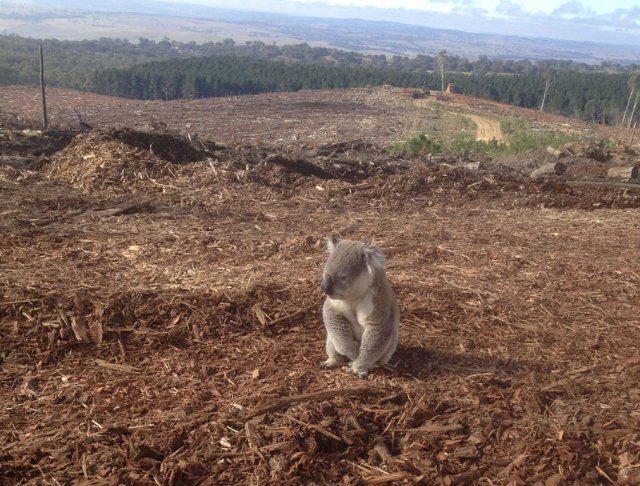
Environment groups say new land-clearing laws, expected to be put before the Queensland parliament this week, contain loopholes that could allow the continued clearing of high-value vegetation where landowners have already “locked in” their vegetation maps.
Queensland is responsible for more land clearing than the rest of the country combined. Rates of clearing surged when the former Liberal National Party (LNP) government under Premier Campbell Newman scrapped restrictions in December 2013.
A new report from the Climate Council estimates that more than 1 million hectares of bushland was cleared between 2012 and 2016 and Queensland accounted for between 50% and 65% of the total loss of native forests across Australia over the past four decades.
The Queensland Labor government first attempted to introduce land-clearing legislation in 2016 but it was defeated. It is expected to use its second-term majority to quickly pass the bill.
Under the current laws, land is exempt from regulation — designated “category X” — if it has been cleared at any time since 1989, no matter how important the regrown forest is for biodiversity or reef water quality.
Landowners have been able to lock in those exemptions — protecting them from changes to the definition of “exempt” — by asking for an official vegetation map of their property. Once they have a map, changes to the definition of exempt land no longer apply to them. The new laws limit only what land can be declared exempt in the future.
Unsurprisingly, landholders enthusiastically locked in land as category X, with land clearing consultants and LNP politicians urging them to do so before the new bill was introduced.
The Environmental Defenders Office (EDO), which supports the new laws as a “reasonable first step”, has warned that clearing will continue if the legislation does not include measures to force landowners to amend maps that designated category X land.
The EDO’s Queensland chief executive officer Jo-Anne Bragg said without measures to redraw property maps “these reforms will be ineffective” as “we don’t know how many hundreds and thousands of hectares in Queensland is classified as category X.”
Wilderness Society Queensland campaign canager Gemma Plesman agreed the bill is a good first step in addressing deforestation in Queensland but said “it is doubtful it will end the deforestation crisis in the state”.
“The proper test of these laws is whether they bring down Queensland’s globally significant levels of deforestation and the environmental problems associated with it, including damaging the Great Barrier Reef and our climate. Queensland’s clearing alone means Australia is the only developed country in the top-10 deforestation hotspots in the world.
“The legislation will not fully protect threatened species habitat as there are still loopholes to allow clearing for fodder and much of the state is exempt from clearing controls, so-called Category X vegetation. Clearing in Queensland killed nearly 45 million animals in just one year, in 2015–16.
“The bill will not stop thinning — which is just clearing by stealth, allowing the removal of 75% of the trees in an area but often meaning wholesale deforestation — of high conservation value vegetation, which is often habitat for threatened or endangered species.
“The bill does not protect riverbanks other than in Great Barrier Reef catchments with meagre buffer zones of just 50 metres. The government needs to create buffers on all the state’s rivers and extend them to at least 100 metres to protect them from damaging erosion problems, including in the struggling Murray–Darling Basin, Channel Country and Gulf Country.”
The head of the Queensland Conservation Council Tim Seelig said the council was disappointed that “gaps” they had asked to be closed were still in the legislation. He said more still needed to be done to ensure koala habitat was out of bounds to all development.
“We recognise the bill will not stop all clearing of native woodlands in Queensland,” Seelig said. “It will not fully address Queensland’s land-clearing crisis.
“Nevertheless, it is a significant step forward that will make a big difference, and we welcome and support it.
“It will see the ending of broadscale remnant clearing for spurious agricultural reasons, it will see the reprotection of high conservation value regenerating woodlands under a modified definition and it will see a curtailing of remnant thinning. It will extend reef riparian area protections and terminate current area management plans.”
The Queensland laws may have an impact beyond its borders. NSW has introduced self-assessable codes for land clearing, mirroring the laws responsible for so much clearing in Queensland and land-clearing approvals have increased tenfold in the Northern Territory in recent years.
If Queensland can substantially reduce broadscale clearing, its approach could serve as a blueprint for governments looking to save what is left in their states.